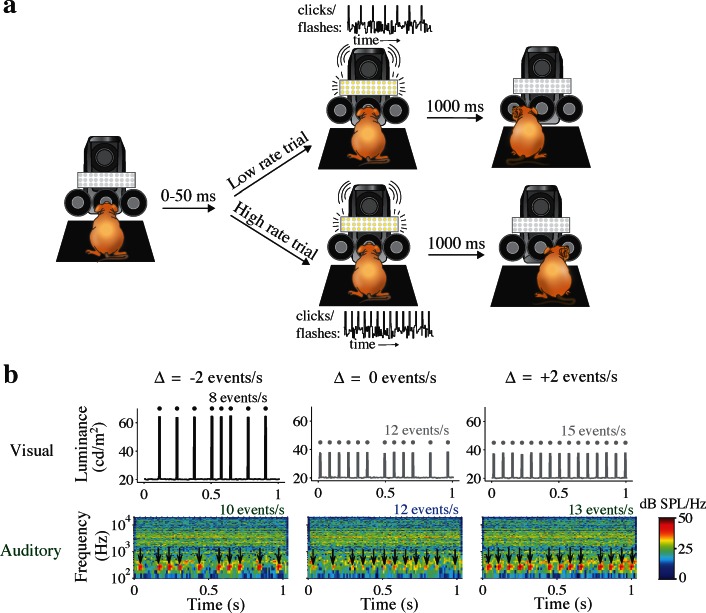Figure 1.
Rate discrimination decision task. (a) Schematic of rat behavioral setup. Rats were trained to perform a multisensory rate discrimination task via operant conditioning. Rats initiated trials by inserting their snouts into a central port (left), triggering an infrared sensor. After a randomized delay period, 1-s stimuli consisting of auditory and/or visual event streams were delivered through a speaker and LED panel (middle). Rats were required to remain in the central port until the end of the stimulus, and were provided with 20 μL of water reward when they selected the correct choice port (low-rate trials: left port; high-rate trials: right port). Trials in which the rat did not remain in the central port for the full stimulus were punished with a 4-s timeout period before allowing initiation of a new trial. (b) Example stimuli presented in human version of task. Time courses indicate arrival of events over the course of the 1-second stimuli. 10 ms events were separated by either short (60 ms) or long (120 ms) intervals. Top: Values on the ordinate indicate average luminance of events and background noise presented during high-reliability (black) and low-reliability (gray) visual trials. Bottom: Spectrograms indicate spectral power of sound pressure fluctuations during auditory stimulus presentation (color bar indicates signal power across frequency bands in units of dB SPL/Hz). Arrows indicate event (220 Hz tone) arrival times for low- (middle) and high- (left, right) reliability auditory stimuli. Auditory events in rat experiments consisted of white noise bursts (not shown). Note logarithmic scaling of frequency range. Multisensory trials consisted of visual (top) and auditory (bottom) stimuli presented together, and included different pairings of auditory and visual reliabilities. Multisensory trials included cue conflict levels ranging from −2 (left) to +2 (right) events/second. Auditory and visual event streams were generated independently on all multisensory trials.

